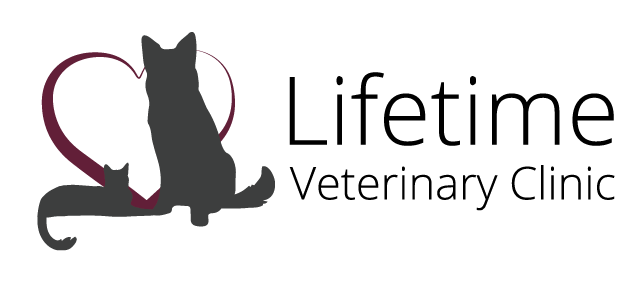Library
-
Rarely, ovarian tissue can be left behind when a cat is spayed. This leads to the ongoing secretion of hormones such as estrogen and progesterone that can result in a cat continuing to have a heat cycle. Ovarian remnants are difficult to diagnose but vaginal cytology, combined with hormone testing, can be used to confirm the presence of functional ovarian tissue. Surgical treatment is typically recommended to prevent other health conditions from developing.
-
Rarely, ovarian tissue can be left behind when a dog is spayed. This leads to the ongoing secretion of hormones such as estrogen and progesterone that can result in a dog continuing to have a heat cycle. Ovarian remnants are difficult to diagnose, but vaginal cytology combined with hormone testing can be used to confirm the presence of functional ovarian tissue. Surgical treatment is typically recommended to prevent other health conditions from developing.
-
Patent ductus arteriosus (PDA) is a heart defect that occurs when the ductus arteriosus (an opening between the aorta and the pulmonary artery) fails to close at birth. A PDA is usually diagnosed when your veterinarian hears a continuous heart murmur during a routine physical examination of your puppy. This article explains PDA and discusses signs, treatment, and prognosis for this condition.
-
Patent ductus arteriosus (PDA) is a heart defect that occurs when the ductus arteriosus (an opening between the aorta and the pulmonary artery) fails to close at birth. A PDA is usually diagnosed when your veterinarian hears a continuous heart murmur during a routine physical examination of your puppy. This article explains PDA and discusses signs, treatment, and prognosis for this condition.
-
Penetrating wounds can look minor on the surface but may cause severe injury below the skin. A thorough assessment requires sedation or anesthesia and surgery may be required to address the extent of the injury. This handout outlines first aid steps a pet owner can take while transporting their injured pet to the veterinary hospital.
-
A Penrose drain is a latex tube placed into a wound with one or two ends exiting the skin to passively remove unwanted fluid, usually from abscesses or open wounds. This handout provides post-operative wound care instructions for cats sent home with a Penrose drain.
-
A Penrose drain is a latex tube placed into a wound with one or two ends exiting the skin to passively remove unwanted fluid, usually from abscesses or open wounds. This handout provides post-operative wound care instructions for dogs sent home with a Penrose drain.
-
Perianal fistula, also known as anal furunculosis, is a serious medical condition that most commonly affects German shepherd dogs. Perianal fistulas are characterized by chronic, purulent, smelly, ulcerating, draining tracts in the anal region and surrounding skin. More recent studies indicate that the condition is more likely caused by an autoimmune disease.
-
A perineal hernia is a protrusion of tissue through the muscle of the perineum. Potential causes, clinical signs, and treatment are explained. The prognosis ranges from good to poor, depending on the ability to perform surgery and the pet's response to surgery. Perineal hernias have the potential to be life-threatening.
-
A perineal urethrostomy (PU) is a surgical procedure that is most commonly performed on male cats with a urinary obstruction. Male cats develop urinary obstructions much more readily than female cats, due to differences in urinary tract anatomy between the two sexes. A PU creates a new urinary opening that decreases the length of the urethra and allows urine to bypass this narrowed region. Less commonly, PU may also be done in cats with severe urethral trauma. After surgery, your cat will be required to wear an Elizabethan collar (e-collar) to prevent self-trauma to the surgical site.

